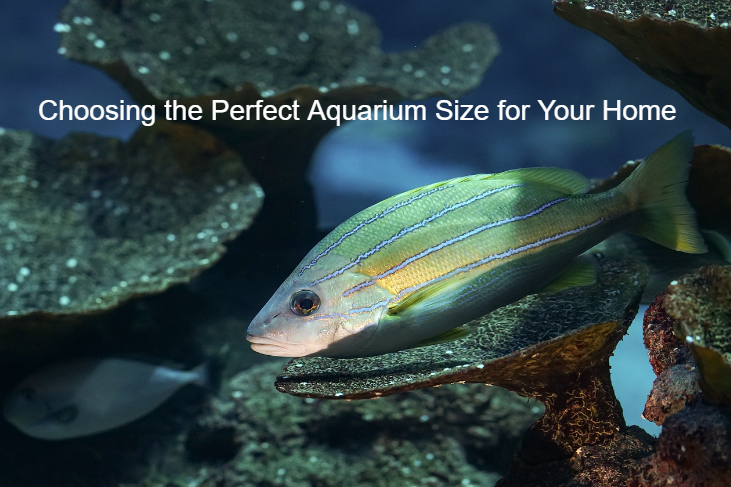Introduction to Choosing the Perfect Aquarium Size
Importance of Aquarium Size
Choosing the right aquarium size is crucial for both the well-being of your fish and the maintenance of your aquatic environment. A properly sized tank ensures ample swimming space, promotes healthy behavior, and helps maintain water quality. Imagine having a goldfish cramped in a small bowl – not only would it be unhappy, but it might also lead to health issues. Thus, selecting the best size fish tank for beginners is an essential step towards creating a thriving ecosystem.
Factors to Consider
When deciding on aquarium size, several factors come into play:
- Type of Fish: Different species have specific space requirements. For example, a goldfish needs more space than a betta fish.
- Room Space: Consider where you plan to place the aquarium. Ensure there’s enough room for the tank and equipment.
- Budget: Larger tanks can be more expensive not only to purchase but also in ongoing costs like maintenance and equipment.
- Maintenance: Bigger tanks often require more water and energy, which can affect how you approach upkeep.
Thinking through these factors will help in determining how big should a fish tank be for a goldfish or any fish species you have in mind.
Small Aquariums (1-20 Gallons)
Benefits of Small Aquariums
Small aquariums, ranging from 1 to 20 gallons, have become popular among beginners for several compelling reasons. For instance, I remember my first tiny tank, which was easy to maintain and perfect for a couple of vibrant bettas. The benefits can include:
- Space Efficiency: They fit easily into smaller living spaces like apartments or desks.
- Lower Cost: Smaller tanks generally come with a lower initial investment and reduced costs for filtration and heating systems.
- Ease of Maintenance: Cleaning is much simpler and quicker than larger tanks, making them manageable for new aquarium enthusiasts.
Limitations and Challenges
However, small aquariums do not come without their challenges. They can require a bit more diligence to maintain a healthy environment:
- Limited Space for Fish: Fewer fish options, as many species need more swimming space.
- Water Quality Fluctuations: Smaller volumes of water can lead to quick changes in water chemistry, requiring more frequent testing and changes.
- Overcrowding Risks: This is particularly relevant for beginners; it’s easy to mistakenly add too many fish, leading to stress and health issues.
Though small tanks can be a wonderful starting point, it’s essential to recognize these potential drawbacks to ensure a thriving aquatic environment.
Medium Sized Aquariums (20-50 Gallons)
Ideal Fish Species for Medium Sized Tanks
Transitioning to a medium-sized aquarium, ranging from 20 to 50 gallons, opens up a world of possibilities for fish enthusiasts. This size is fantastic for a balanced community tank. My friend recently upgraded to a 30-gallon setup and chose a delightful mix of fish. Here are some ideal species for medium-sized tanks:
- Tetras: Varieties like Neon Tetras or Rummy Nose Tetras add color and are peaceful community fish.
- Corydoras Catfish: These friendly bottom dwellers help keep the tank clean and thrive in small groups.
- Guppies and Platies: Hardy and vibrant, these guys bring life and are easy to care for, making them perfect for beginners.
- Dwarf Gouramis: They are not only stunning but also add diversity to your tank.
Maintenance Tips
While medium-sized aquariums offer diverse fish choices, they also require regular upkeep to maintain a healthy environment. Here are some essential maintenance tips:
- Regular Testing: Check pH levels, ammonia, and nitrate levels weekly to ensure water quality remains high.
- Water Changes: Aim for 20-30% water changes every two weeks to keep the tank clean and stable.
- Filter Maintenance: Clean or replace filter media every month to ensure proper filtration without disrupting beneficial bacteria.
- Feeding Schedule: Avoid overfeeding; a few small meals per day is better than one large one. This helps maintain water quality.
With attention to detail and a bit of effort, a medium-sized aquarium can flourish and provide joy to both the aquarist and the fish alike!
